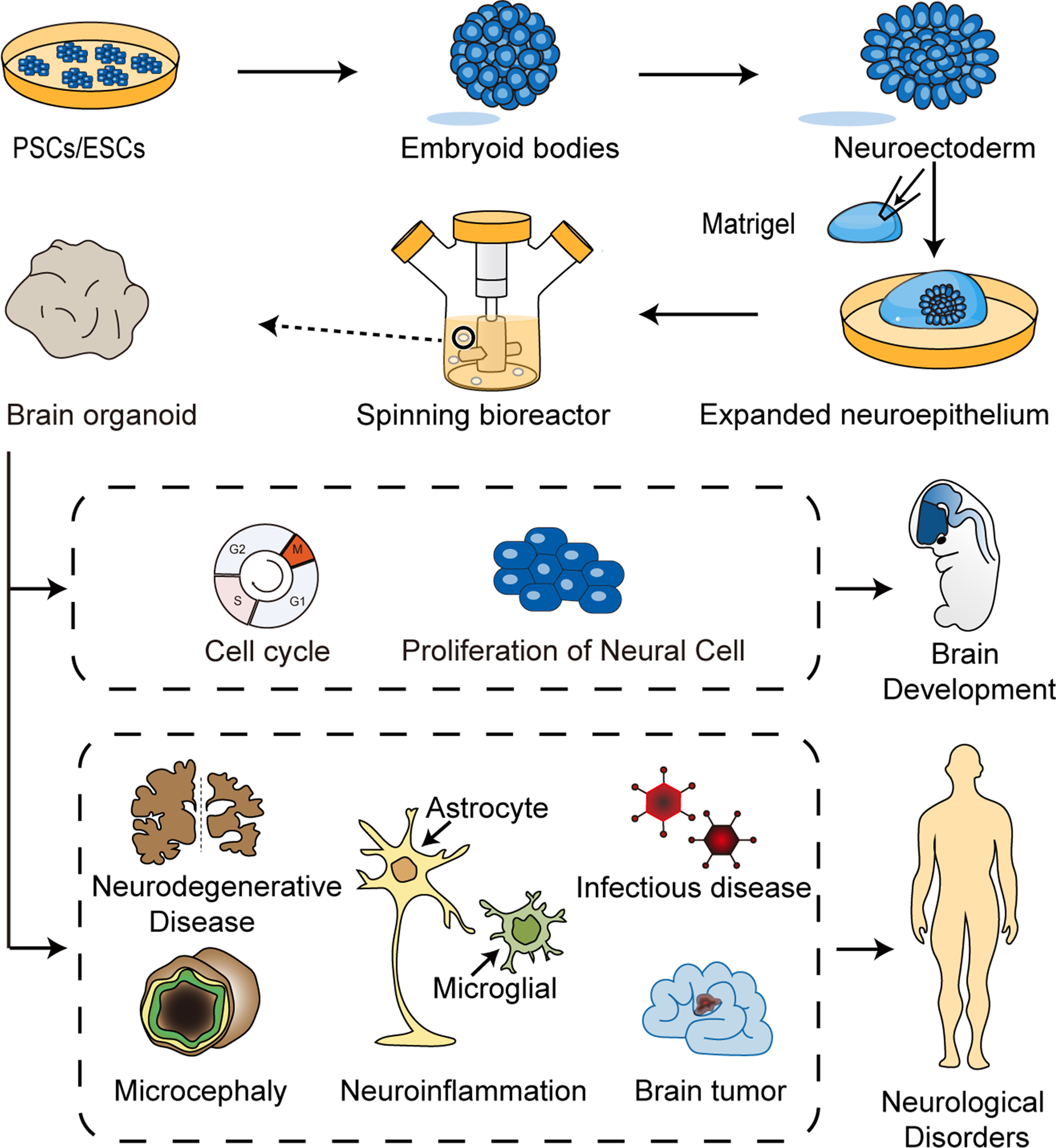
BRAIN ORGANOIDS: NEURAL DEVELOPMENT AND NEUROLOGICAL DISEASES
A brain organoid is a self-organizing three-dimensional tissue structure derived from human embryonic stem cells or pluripotent stem cells. They show the ability to stimulate the architecture and functionality of the human brain. Recent publications have reported that brain organoids can mimic the dynamic spatiotemporal process of early brain development and serve as an effective platform to test and guide personalized treatment for various brain disorders.

Challenges in replicating brain architecture in-vitro
Determining and studying the human brain development and neurological disorders have always been challenging. Scientists have made enormous efforts on the development of this 3D structure. Although the human brain is an ideal subject for studying neuropathology, the relative inaccessibility for research purposes and the difficulties in cultivation and manipulation is limiting. Therefore, a new model that can better replicate the characteristics of the human brain is needed. In recent times, the tremendous potential of human pluripotent stem cells to self-renew and to differentiate in multiple directions has gained great attention in the field of research and medicine (1,2).
Applications of brain organoids
Brain organoids have been widely used across various research fields and medical applications in the past few years, because of their capacity to resemble physiological tissue organization and to stimulate brain function representative of that observed in in-vivo states.. Brain organoids have opened a new avenue to study early brain development. The role of tumor protein TP53 in human brain development has been recently studied by Navarro et al (3). The control short hairpin RNA and RNA against TP53 were transduced into human iPSCs, and later were used to generate control and TP53- knockdown brain organoids. After 30 days of culture, the immunohistochemistry results give an Insight about the neural stem cell layer being disorganized. Taking advantage of brain organoids, a more detailed and abundant neural developmental process can be observed in vitro, including dynamic changes and distribution of neural cells as well as organization and morphology of brains (1,3).
REFERENCES
1. Nan Sun, Xiangqi Meng, Yuxiang Liu, Dan Song, Chuanlu Jiang & Jinquan Cai Applications of brain organoids in neurodevelopment and neurological diseases , Journal of Biomedical Science volume 28, Article number: 30 (2021)
2. Canals I, Ginisty A, Quist E, Timmerman R, Fritze J, Miskinyte G, Monni E, Hansen MG, Hidalgo I, Bryder D, Bengzon J, Ahlenius H. Rapid and efficient induction of functional astrocytes from human pluripotent stem cells. Nat Methods. 2018;15(9):693–6.
3. Marin Navarro A, Pronk RJ, van der Geest AT, Oliynyk G, Nordgren A, Arsenian-Henriksson M, Falk A, Wilhelm M. p53 controls genomic stability and temporal differentiation of human neural stem cells and affects neural organization in human brain organoids. Cell Death Dis. 2020;11(1):52.



